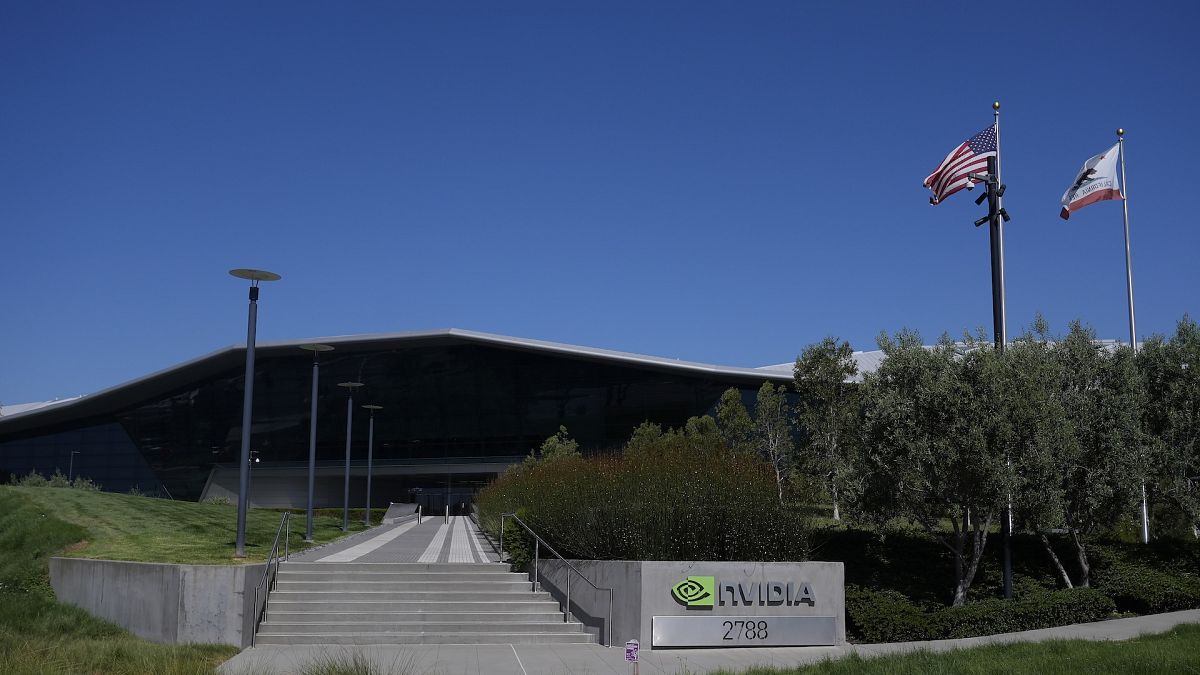Nvidia releases its quarterly earnings, a month after major tech companies reported second-quarter performance. The spotlight will be on updates regarding its Blackwell chip, viewed as a significant area for growth.
Nvidia, the artificial intelligence (AI) powerhouse, is set to report its second-quarter earnings for the fiscal year 2025 after the US market closes later today. The company's performance is crucial for gauging the growth trajectory of the AI industry, with investors closely monitoring its data centre sales, the primary technology driver for hyperscalers.
The AI chipmaker is expected to sustain its strong growth momentum despite delays in its most advanced chip, Blackwell.
Nvidia's shares have risen by 161% this year, with a 35% increase since the company reported robust results for the fiscal first quarter. In June, Nvidia executed a 10-for-1 stock split to make its shares more attractive to investors.
Amid ongoing strong demand for AI chips, Nvidia's market capitalisation surpassed that of Apple and Microsoft, briefly becoming the world's most valuable company in June. However, Apple reclaimed the top spot after announcing its AI adoption.
Nvidia remains in second place, with a market valuation of $3.16 trillion (€2.83 trillion) as of the close on Tuesday, followed by Microsoft at $3.07 trillion (€2.75 trillion).
Forecasts for growth
According to several institutional researchers, including Visible Alpha, Wall Street, and Seeking Alpha, the average earnings per share and revenue for Nvidia are expected to be $0.63 (€0.56) and $28.6bn (€25.6bn) respectively, representing growth of 254% and 210% compared to a year ago. The revenue expectation surpasses Nvidia's guidance from the first fiscal quarter.
Additionally, Nvidia's most profitable segment, its data centre division, is anticipated to generate $25bn (€22.4bn) in revenue, reflecting a 144% increase from the same quarter last year. However, this marks a significant slowdown from the more than 400% growth seen in the previous quarter.
Yearly rate expected to start flattening
Nvidia's growth significantly accelerated in the July quarter of 2023 due to a surge in AI chip demand, following the launch of Microsoft's chatbot, ChatGPT, in February of the previous year.
As a result, the yearly growth rate is expected to start flattening from the quarter under review, owing to the higher base established in the same quarter last year.
Meanwhile, Nvidia's gaming segment may continue to experience slow growth, though it will not be a major factor, as this segment accounted for only 10% of the company's overall revenue in the first fiscal quarter.
Additionally, Nvidia's gross margin has consistently increased, rising to 78.4% in the first fiscal quarter of 2025 from 64.6% a year earlier. The company expects its gross margin to be 74.8% in the July quarter, indicating lower profitability.
Blackwell mass production delays
Earlier in August, Nvidia announced that its most advanced AI chip, Blackwell, could be delayed by three months due to "design flaws", causing its shares to drop by 15% that week.
Launched in March, Blackwell boasts the capability to "reduce LLM inference operating costs and energy consumption by up to 25 times", positioning it as the next-generation AI chip essential for supporting widespread LLM training across various domains.
The three-month delay may prevent Nvidia's customers, including Alphabet, Microsoft, Meta Platforms, Amazon, and Tesla, from placing cluster orders in the first quarter of 2025.
However, the Blackwell chips are aimed at the high-end market, particularly large cloud providers, which contribute 45% of Nvidia's data centre revenue. Analysts expect that mass production will not be delayed beyond the fourth quarter of 2024. Therefore, updates on Blackwell's progress will be crucial for Nvidia's near-term outlook.
Furthermore, Nvidia's Hopper series chips, including the H100 and H200, are expected to remain in high demand as companies continue to expand their data centre capacities.
Demand for Nvidia's H100 has been particularly robust, driven in part by Meta's use of the large language model (LLM) software, Lama 3.
Meanwhile, the H200 chips, designed specifically for the Chinese market to avoid US export restrictions, are likely to bring higher gross margins.















